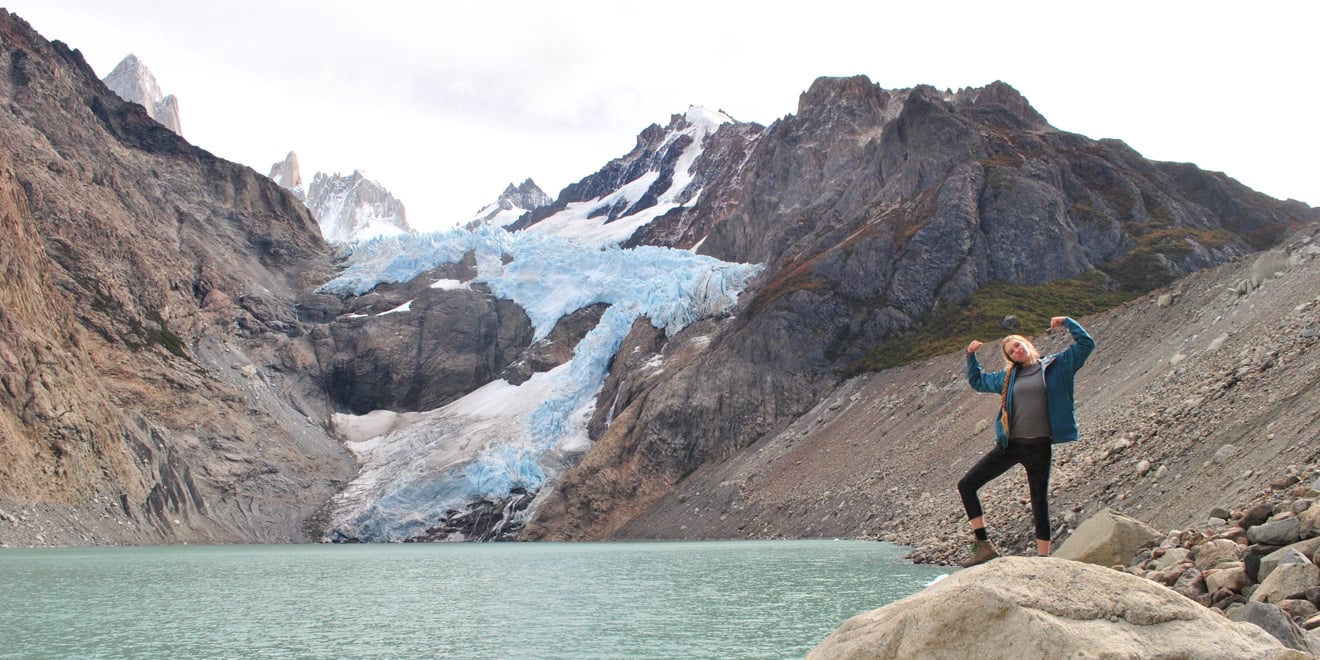Sasha Landauer ’20, co-founder of gapyearly, took a gap year in the 2015-16 academic year to explore different cultures before attending Stanford. Over the course of 12 months, Landauer traveled to six continents and 10 countries. The Daily sat down with Landauer to learn about her adventures and advice on taking a gap year.
The Stanford Daily (TSD): Could you describe what you did during your gap year?
Sasha Landauer (SL): I took my gap year before starting Stanford, after graduating high school. I spent most of the year abroad, but I wanted to do different work-stay arrangements and live with the locals as much as possible. I found this website called HelpX where you could work in exchange for room and board.
Using that, I first went to Europe with my best friend, who also took a gap year. We worked as maintenance in hotels in Venice and Paris and also on a farm in Italy. [These work-stay programs] also made it a lot cheaper, and we got to meet great families that way. I stayed there for a few months.
Then, I ended up going to New Zealand for two months. I stayed with a friend of mine there, kind of hanging out. He lived there, so it was free.
[After that] I went to Nepal on my own. I taught English in a monastery in the Himalayas and trekked there for a while near Everest.
[From] there I went down to Antarctica. I was part of this conservation and leadership exhibition with a group called 2041. In this group, you are supposed to fundraise before you go and when you fundraise, you raise awareness that the treaty that protects Antarctica expires in 2041. There was a very international group of people on the boat. They were from 35 countries and everyone was very dedicated towards the environment.
When I got back to Argentina [from Antarctica], I stayed in Argentina for a few months with a friend. I backpacked and traveled around.
I also worked in the summer on a farm in California [before leaving to Europe]. I got to save some money this way.
TSD: What was your most memorable experience during your gap year?
SL: Three weeks in, I was pretty sick in Europe. My friend and I were on this island and I had tons of lice. I was pretty miserable, kind of sitting there alone; I couldn’t really work since I was contagious. I remember having this moment [thinking] that nobody knows what I was doing there, and there was this overwhelming feeling that I was responsible for my own development. No one was going to tell me be a smarter, more ethical person. That was entirely up to me to create some sort of meaningful development. That [experience] was really cool. It was kind of freaky.
TSD: Why did you decide to take a gap year?
SL: I decided an hour before the deadline, before I had to commit. I felt like my path was a ladder. Stanford was the next obvious step and there would be a next obvious step professionally after that. I wanted to interrupt that sense of continuity and get some time to explore on my own and figure out what I’d like to do when nobody’s watching. You know, in high school, everything ends up on a college application. I really liked what I did, but I had a lot of uncertainty over my motivation. I wanted to explore and there were a lot of places I wanted to explore. I realized that the gap year would be the freest period before college, before I had obligations everywhere else.
TSD: What did you learn during this gap year?
SL: I learned to be alone, which is something I never really had to do in high school. The few months I had in Nepal were really important. I [now] feel comfortable with myself and just know that I don’t need to be around a lot of other people to be okay.
I also learned how fortunate I am to have the sort of relationships that were so supportive. My parents and my best friend were able to keep in touch even though I wasn’t able to see them for a year. And I think that was great to establish before college, where there [can be] a lot of anxiety over being away from home … I was pretty set and comfortable with that by the time I got here.
TSD: How has your gap year informed your experience at Stanford?
SL: It was a really good thing to have done before coming here. I came to Stanford much more comfortable with myself. I didn’t have [as much] anxiety over social interactions as much as I would have in high school. It also raised the stakes a lot for making sure I’m doing things that bring me to joy here.
I think I’m also motivated to engage with my professors and kind of make the academic side a fulfilling personal experience because I really like having face to face interaction and conversation with people.
TSD: What advice would you give to people thinking about taking a gap year?
SL: Definitely go for it. I don’t think anyone taking a gap year regrets it. I think it’s sort of a unique thing that’s open during this time of life.
Also, definitely reach out to people. I built my website to help people find information about gap years and how to make [the gap year] more successful.
At the end of the day, if it feels right, no matter the worries are, things are going work out.
Contact Christina Pan at capan ‘at’ stanford.edu.
Editor’s Note: The Q&A has been updated to reflect the re-branding of Gap Guides as gapyearly.
